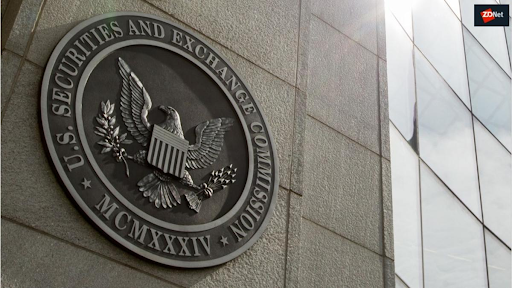Clicks, views, signups, and fees are at the forefront of every major company in the crypto space. In any profit-driven market, these metrics are necessary to keep the lights on. But, they can easily lead you astray when they become the focal point of any business model. To the untrained eye or unaccountable employee, opportunity is everywhere. But the consequences of this narrow, results-focused vision can create a negative blind spot.
To make matters worse, profitable market conditions and an influx of retail are exasperating the issue. A breaking point of this greedy behavior is inevitable with outcomes we would probably rather avoid. Let’s look at some examples hidden in plain sight and hypothesize what the outcomes could be.
Example 1: Greedy Exchange Listings
There used to be a time when vetting coins before an exchange listing was a serious process. XRP is a perfect example. Coinbase refused to list XRP for ages, despite the project’s endless lobbying and willingness to do whatever it took to make it onto the exchange. Coinbase and other companies would take months to review coins before deciding to wait even longer for more information.
This simply is no longer the case. Now, anything goes.
Coinbase Pro listed Shiba Inu, a meme coin based on DOGE, another meme coin. I have likened the dog coin phenomenon to inception – memeception, if you will.

This project sent half of its coin supply to Vitalik Buterin in the hopes that he would never sell. As you know, he did sell a portion of the coins, donating the proceeds to disaster relief in India and tanking the price of the coin.
If you dig into the Shiba white paper, it reads, “we sent over 50% of the TOTAL supply to Vitalik. There is no greatness without a vulnerable point as a long as VB does not rug us, then SHIBA will grow and survive.”
We are now seemingly at the point where exchanges will do whatever it takes to list an asset that brings in more volume in an effort to beat their previous quarter’s net profit. With crypto exchanges gearing up to go public, caution has been thrown to the wind and profit is at the forefront of their decision making. Left in the ruins are customers who didn’t know better, purchased crap coins, and trusted their platform’s vetting process.
Example 2: Desperate News Sources
Major media outlets are perpetually in a race to be the first to post breaking news. Crypto content is no exception. The reason is obvious; the source to report a major announcement brings in the most traffic, attention, and advertising dollars. The downsides of this behavior can be catastrophic.
Recently, GlobeNewswire shared an announcement that Walmart was beginning to accept Litecoin as a payment option. The price of Litecoin and Bitcoin both rose rapidly on the news that one of the world’s largest retailers was adopting cryptocurrency.
Media outlets from CNBC to Reuters quickly jumped on the fake news, spinning the story to their followers. The problem? It was all fake. There were endless red flags for anyone willing to do 15 seconds of due diligence. The original article included:
- a broken web link,
- zero quotes from the CEO,
- a fake linked email,
- no mention of an SEC registration or filing,
- and the original publisher wasn’t even the regular company that shares Walmart’s news.
The story does not end there. As the fake news snowballed, we saw fabricated quotes from the CEO of Walmart. And for the cherry on top: the Litecoin Foundation’s official Twitter account shared the news. Wow.

As expected, the price of Litecoin shot up to $231 from $173 – a 34% increase in less than 30 minutes. In the following 30 minutes, after every major news outlet publicly posted the news, the price dumped right back to where it was. This punished everyone that bought the news on the way up, and likely rewarding those that instigated the event.
Someone (or some group) likely made a massive amount of money at the expense of others. The news was well-timed, hitting during the early business hours of Monday morning in the U.S. Government agencies are reportedly already investigating the matter, trying to find anyone who may have bought Litecoin immediately before the event. The writers at the media companies may receive a slap on the wrist, but the biggest losers are those that literally bought into the hype and are now stuck with an overpriced bag of Litecoin.
We tend to trust everything we see, hear, and read. It’s the reason why fake news was circulated, and price the pumped.
Example 3: Irresponsible Legacy Institutions
Let’s quickly look at one final culprit – legacy institutions. Legacy financial institutions are offering crypto funds left and right, with the same 5 coins almost every time: Bitcoin, Ethereum, Litecoin, Ethereum Classic, and Bitcoin Cash. Two of these coins I can stand behind, one’s popularity has dramatically diminished, and two of them are drowning in controversy.
There are numerous viable coins to pick from, yet somehow the same few dinosaurs are always in the starting lineup for institutional adoption. It makes you wonder why this is always the case. Could it be lobbying, or could it be a complete lack of awareness of the crypto space?
The Takeaways
First and foremost, we have to look out for ourselves. Whether we are reading an article, buying coins from a trusted exchange, or entering into a crypto fund, we can’t expect every major participant in crypto to have our best interests in mind. When it comes to buying an asset from a news break, you need to triple-check the veracity of the news even if it looks obviously real at first glance. This isn’t the first time we have seen ridiculous claims like this circulate around major crypto outlets.
Anytime there is a major announcement of a Bitcoin fund, purchase, or acceptance, I always look for the SEC filing on the official government site. It is as easy as searching “SEC” and a few keywords from the news. This is the fastest way to verify if something is real. Media outlets should be doing this diligence before they report on news, but we can’t count on this to happen every time. The Litecoin story is the perfect example.

Between exchange listings, reckless abandonment media coverage, and out-of-touch legacy institutional involvement, regulation must be around the corner. Be it three months, six months, a year or two, behavior like the examples above can’t go on forever. There are too many anxious regulators eager to do their job, regardless of the net positive their crackdowns result in. While it is obvious that manipulation, mistakes and mishaps happen in all markets, crypto happens to be stuck in the regulatory hot seat.
Our choice is to either get our act together now or take the punishment on the chin. Exchanges and media outlets doing everything they can to boost margins and increase clicks will end poorly. The desperation will likely only get worse as the price goes up and right. Incentives are clear as daylight and only looking shinier, but the music won’t play forever. Regulators are watching our every move, leading me to believe that the worse we act, the harder the hammer will inevitably come down.
As traders, investors, HODLERs and participants, let’s continue to do all we can to make life-changing money and encourage the best behavior from the entities we trust and enjoy. These two pursuits are not mutually exclusive. It is my belief they are mutually beneficial to each other and the sector as a whole.
If you want an even deeper example than the ones above, read what is a stablecoin for some insight into the currencies you use every day.
